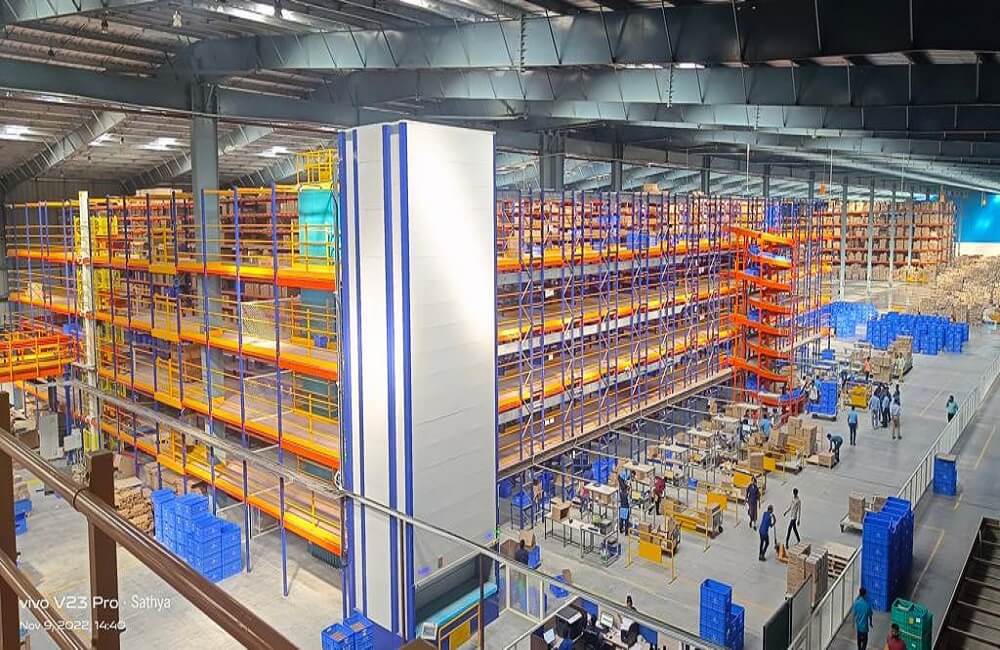As we step into 2024, the world finds itself at a critical juncture, facing environmental challenges that demand urgent attention. Sustainability is no longer a mere buzzword; it’s a prerequisite for the growth of industries. Against this backdrop, the Logistics and Warehousing sector stands at the forefront of transformative change, driven by the pressing need to balance industrial growth with environmental responsibility.
In sync with Industrial growth, India has claimed to be one of the world’s largest contributors of greenhouse gases (GHGs). India’s contribution to carbon dioxide is constituting seven percent of the global total, as reported by Statista.
In a strategic move to combat emissions and align with global sustainability goals, India has set its sights on reducing the emissions intensity of its economy by 45% by 2070, compared to 2005 levels. This aim accentuates the need for a paradigm shift, particularly within the buildings and construction sector.
Despite the gradual pace of adoption, the potential impact of the new-age technologies on sustainability is immense. As industries pivot towards sustainability, the warehousing sector emerges as a pivotal catalyst, shaping a future where responsible practices are an integral and defining facet of the industry’s evolutionary journey.
Recognising the urgency for sustainability
With the persistent surge in demand for goods and services, the warehousing industry is a linchpin in the supply chain. However, this rapid expansion has come at an environmental cost. The International Energy Agency reports that the industrial sector, including logistics and warehousing, contributes a substantial 15% of India’s total CO2 emissions. As urbanisation and consumption patterns evolve, the need to adopt sustainable practices becomes increasingly apparent.
The projections for the warehousing industry in India are significant, with an expected growth rate of 16% and a market size reaching US $ 35 billion by 2027. This growth, however, presents a dual challenge. The industry must meet the burgeoning demand for efficient storage and distribution facilities while concurrently addressing the carbon footprint resulting from this expansion.
The pillars of sustainable warehousing
Sustainable warehousing in 2024 encapsulates a multi-faceted approach meticulously crafted to minimize environmental impact. This approach integrates various eco-friendly practices that form the core of logistics operations, including energy-efficient design, resource management, waste reduction, and emissions control.
1. Energy Efficiency:
In the pursuit of sustainability, warehouses are prioritising energy-efficient design. Technologies such as solar panels, LED lighting, optimised HVAC systems, and advanced monitoring systems are being incorporated to efficiently manage water and energy usage, resulting in reduced consumption.
2. Water conservation:
Aligning with government initiatives like the National Water Mission, sustainable warehouses are implementing rainwater harvesting systems, water recycling facilities, and water-efficient fixtures. These measures not only reduce water consumption but also contribute to the responsible use of local resources.
3. Green infrastructure:
Integrating green spaces, rooftop gardens, and vegetation is becoming commonplace in sustainable warehouses. Beyond enhancing aesthetics, these elements aid in air purification and temperature regulation. The adoption of eco-friendly construction materials and Green building certification further underscores the commitment towards sustainability.
4. Emission reduction:
To curtail emissions, warehouses in 2024 are increasingly adopting electric vehicles for intra-logistics transportation and reducing fossil fuel usage. Regular audits and assessments are conducted to monitor and ensure effective emission reduction practices, aligning with global sustainability standards like the Global Reporting Initiative and Carbon Disclosure Project.
5. Waste management:
Implementing effective waste segregation, establishing recycling initiatives, and adopting strategies for reduced packaging play integral roles in curbing the overall generation of waste. As per estimates from Niti Aayog, Urban India generates a substantial daily amount of municipal solid waste, ranging between 1,30,000 to 1,50,000 metric tonnes (MT). This translates to an annual accumulation of 50 million MT. Alarming projections indicate that if current rates persist, this figure is poised to escalate to around 125 million MT annually by the year 2031.
Building a sustainable tomorrow
Embarking on the journey toward sustainable warehousing in 2024 presents challenges, but it also opens avenues for innovation and growth. Government commitments to achieving carbon neutrality by 2070, coupled with initiatives like Gati Shakti, Multimodal Logistics Parks, and the National Logistics Policy, underscore the harmonization of sustainability and growth in India’s trajectory.

CEO
TVS Industrial & Logistics Parks
Companies across sectors are increasingly recognising the imperative to integrate sustainability into their operational DNA, paving the way for a collective commitment to environmental stewardship. The spirit of collaboration is palpable as companies express a keen interest in partnering with sustainable enterprises. This is a shared commitment to building a resilient and green future. Warehousing giants, much like the rest of the industry, are realising that the path to sustainability involves collective action.
As we move forward, the vision is clear – a future where warehouses are not just hubs for storage and distribution but epicentres of sustainable innovation. The narrative of sustainability is no longer confined to a single player; it’s a collective story that unfolds as companies, big and small, join hands to script a greener, more responsible chapter in the logistics and warehousing sector.



